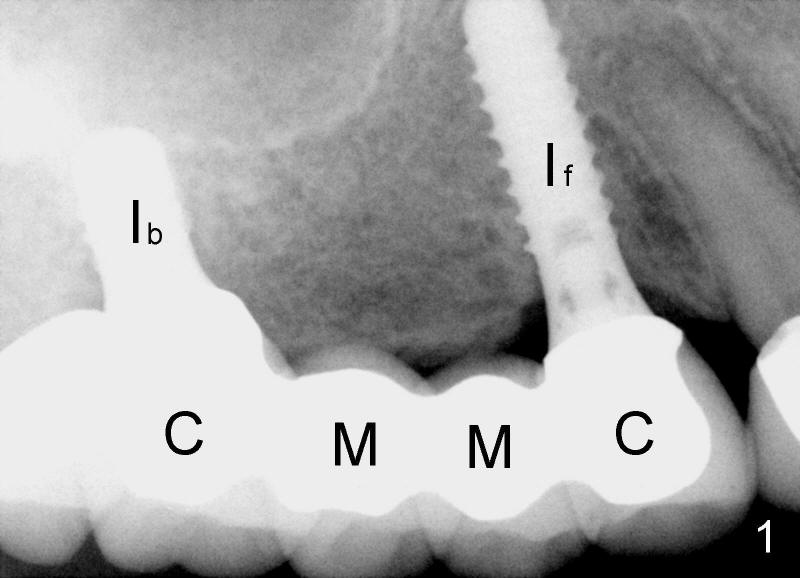
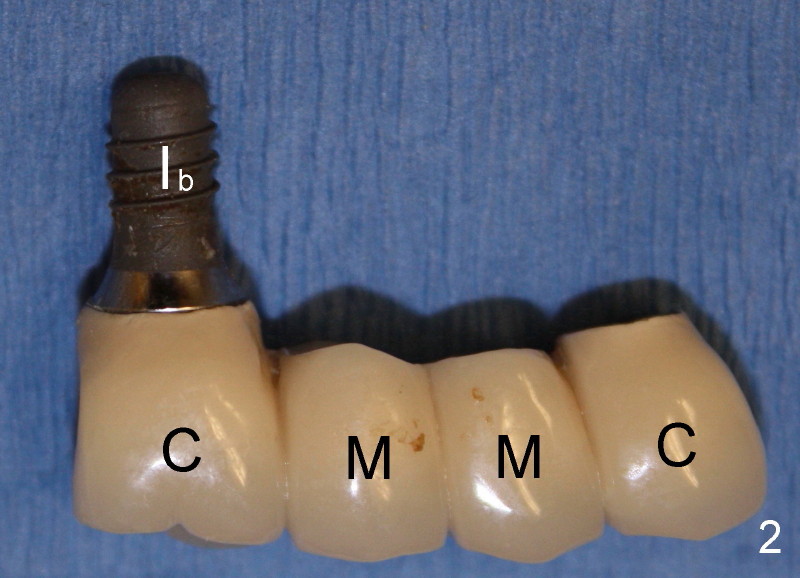
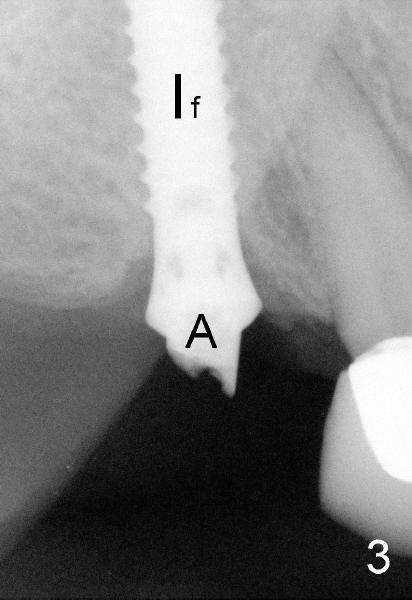
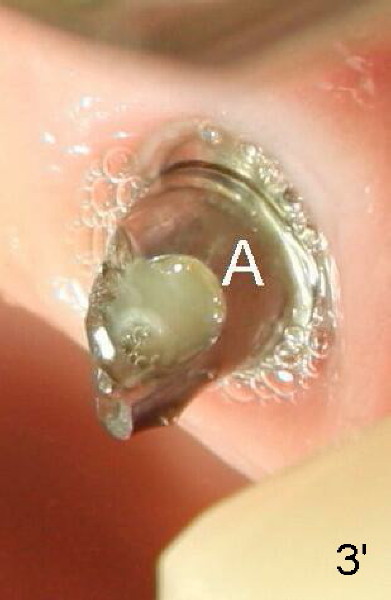
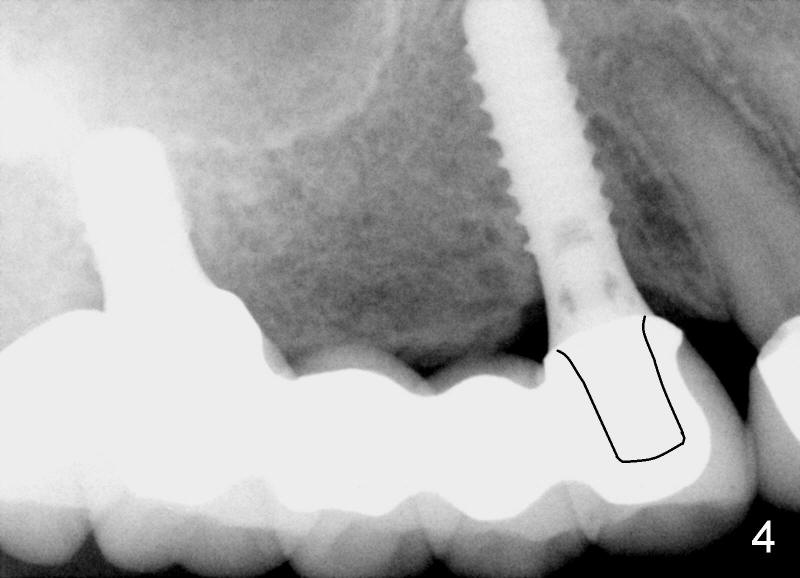
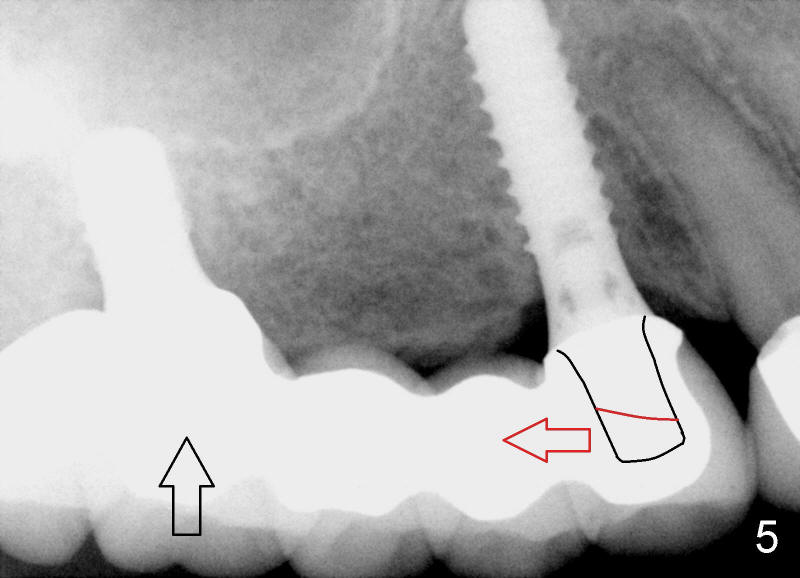
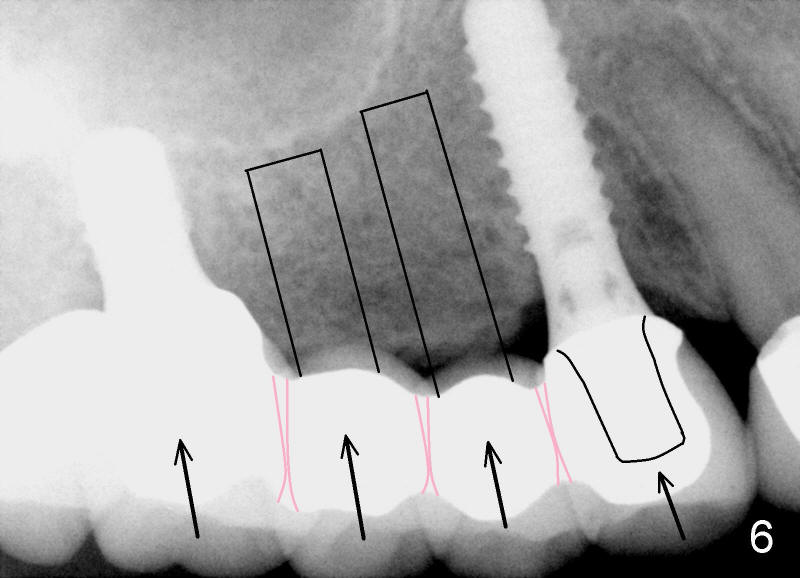
 |
 |
|
 |
 |
 |
 |
 |
|
Overloading II
We have talked about disadvantages of bridges over natural teeth (1 2 3 4). Today's case will show that it is also a bad idea to have a long bridge supported by too few implants.
Mrs. Yan loves to chew something hard. She has had a four-unit bridge (Fig.1 CMMC, to replace four missing teeth) supported by two implants (If, Ib) for 7 years. The implant in the back (Ib) is shorter than the one in the front (If).
Last week she returns to our office, complaining that the bridge is loose. The bridge is removed from her mouth quite easily (Fig.2). Gone is the implant in back (Ib). It appears that the short implant fails to bind to the bone.
More surprising is that the abutment (Fig.3,3' A) is snapped (broken). The abutment is like a post. It is inserted to an implant (Fig.3 If) in one end.
The other end of the abutment (Fig.4 black outline) is used to hold a crown.
When Mrs. Yan bites down heavily on the failed implant/abutment/crown in the back (Fig.5 black arrow), the whole bridge tilts upward and brings the crown in the front backward (red horizontal arrow). The sudden backward force snaps the abutment in the front (red line).
We plan to get a new abutment (Fig.6 rounded black outline) over the implant in the front and a new single crown. Then three implants will be placed, including 2 in the middle (black boxes) and one in the back. Finally 3 more new separate crowns (pink outlines) will be cemented over individual abutments (not shown). When everything succeeds as planned, Mrs. Yan can chew almost anything she wants. These 4 implants will be difficult to fail; the corresponding abutments will basically never break again. All of these is due to the fact that chewing forces (arrows) are parallel to the long axes of 4 crowns/abutments/implants. Compression pressure (vertical) seldom causes mechanical failure (breakdown), whereas horizontal twisting force is detrimental.
If one of 3 new implants does not heal well, we may connect crowns together, like before (Fig.1,2). We will see you in due time, since Mrs. Yan is determined as shown by her previous treatment.
Xin Wei, DDS, PhD, MS 1st edition 03/20/2012, last revision 09/28/2012